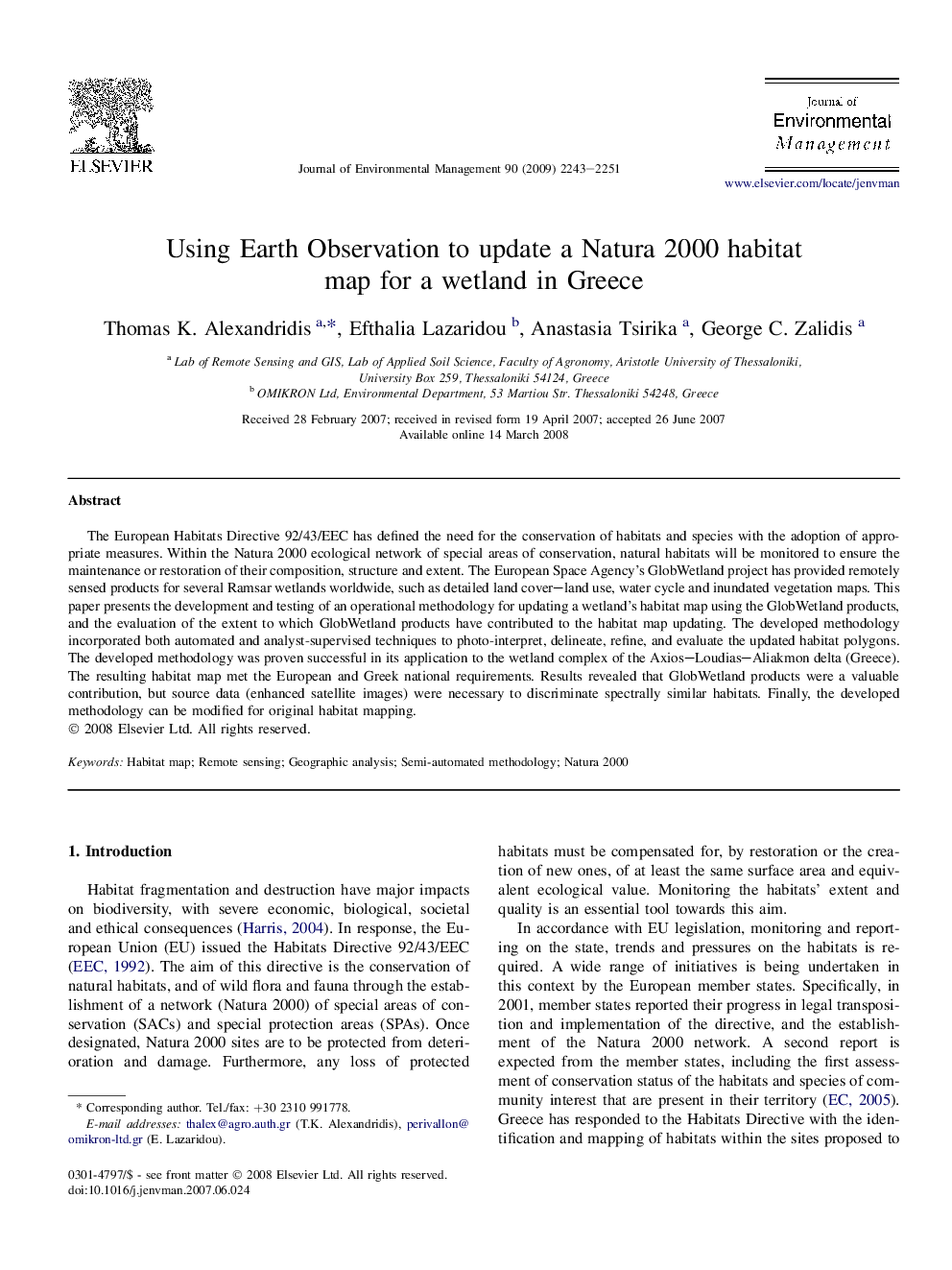| Article ID | Journal | Published Year | Pages | File Type |
|---|---|---|---|---|
| 1058187 | Journal of Environmental Management | 2009 | 9 Pages |
The European Habitats Directive 92/43/EEC has defined the need for the conservation of habitats and species with the adoption of appropriate measures. Within the Natura 2000 ecological network of special areas of conservation, natural habitats will be monitored to ensure the maintenance or restoration of their composition, structure and extent. The European Space Agency's GlobWetland project has provided remotely sensed products for several Ramsar wetlands worldwide, such as detailed land cover–land use, water cycle and inundated vegetation maps. This paper presents the development and testing of an operational methodology for updating a wetland's habitat map using the GlobWetland products, and the evaluation of the extent to which GlobWetland products have contributed to the habitat map updating. The developed methodology incorporated both automated and analyst-supervised techniques to photo-interpret, delineate, refine, and evaluate the updated habitat polygons. The developed methodology was proven successful in its application to the wetland complex of the Axios–Loudias–Aliakmon delta (Greece). The resulting habitat map met the European and Greek national requirements. Results revealed that GlobWetland products were a valuable contribution, but source data (enhanced satellite images) were necessary to discriminate spectrally similar habitats. Finally, the developed methodology can be modified for original habitat mapping.
